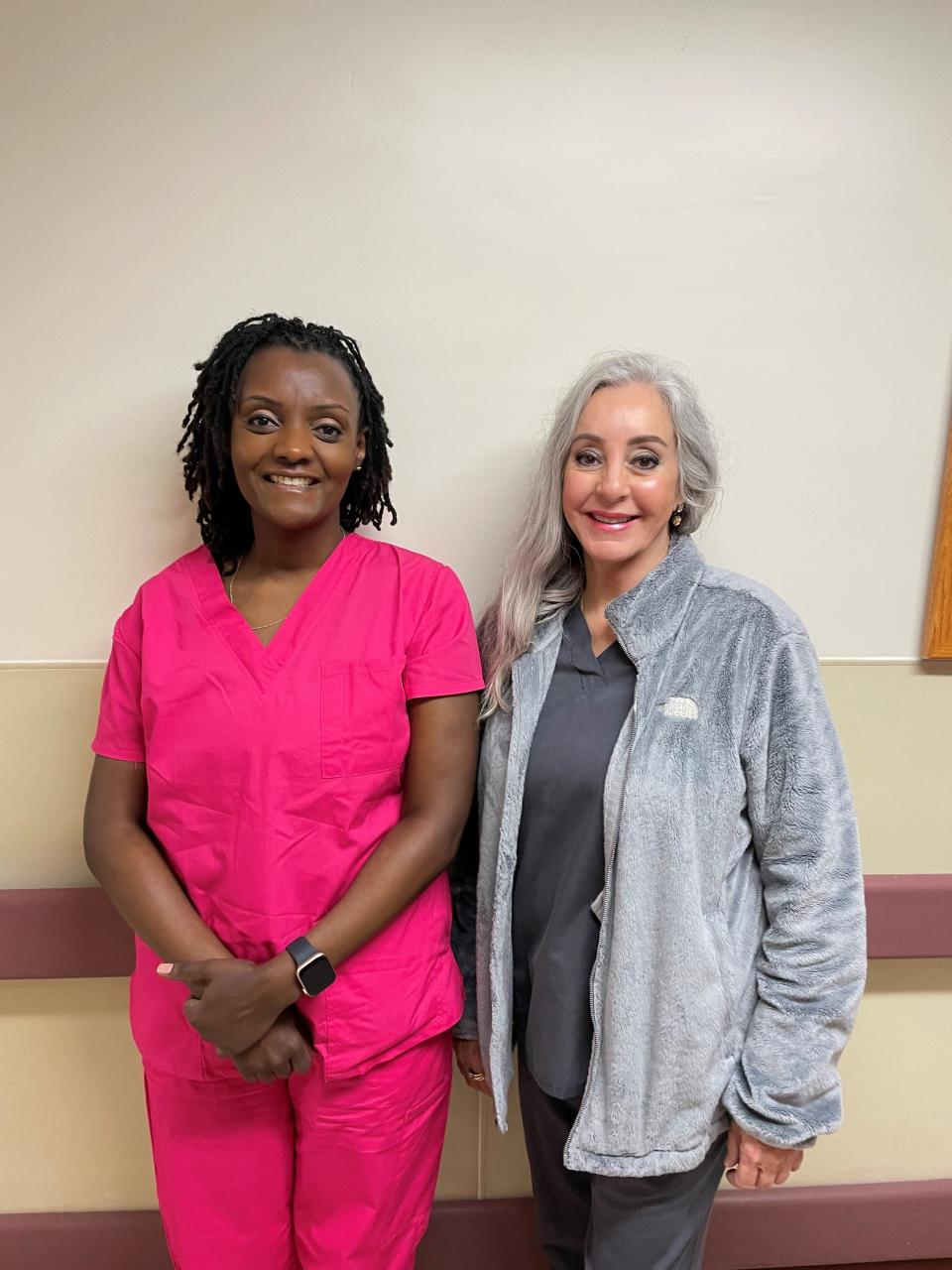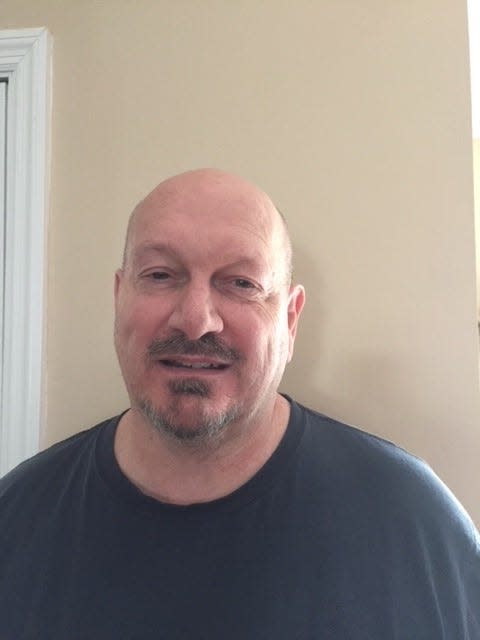Breast cancer survivors stress early intervention in path to recovery | Mark Ryan
They’re wounded warriors, like the patients they care for.
Julie Wheat and Irene Njeru are two of the more than 4 million breast cancer survivors in the United States, a number that includes persons still being treated and those having completed treatment.
They work as registered nurses on the same shift, at the same hospital. Coincidence? Maybe, maybe not. The disease and statistics are that scary.
According to the American Cancer Society, one in eight women in the U.S. will be diagnosed with breast cancer. (Men account for one percent of breast cancer diagnoses.)
Julie, whose diagnosis came first, has done well with treatment. Irene’s biggest supporter preaches early preventative interventions.

“Self-examinations every month and annual mammograms are really important,” she said. “But if you do have a family history, then you need to get genetic testing.”
Irene was devastated when recent biopsy test results confirmed her worst fear: the abnormal area noted in the mammogram screen and ultrasound was invasive ductal carcinoma – a 11-millimeter mass.
Irene had been working the full-time job and an additional part-time nursing job, along with taking classes toward obtaining an advanced nursing degree. But with surgery suddenly being the priority, she arranged for medical leave from work and dropped out of school for a quarter.
“My new normal became countless doctors’ visits,” she said.
Fortunately for Irene, health insurance wasn’t a big factor in choosing a facility for treatment. Options ranged from high-profile places like M.D. Anderson Cancer Center and Sloan Kettering Cancer Center to local hospitals with top reputations like the Moffitt Cancer Center, Tallahassee Memorial Cancer Center, Orlando Health Cancer Institute, and the University of Florida Health Shands Cancer Hospital in Gainesville.
Irene picked close-to-home UF Health Breast Center, and its “Tumor Board” to plan her recovery path. A Tumor Board consists of a group of doctors and providers that brainstorm the best possible cancer treatment and care plan.

Of particular importance to the multi-disciplinary team before finalizing a surgical/treatment plan was genetic testing for mutations of the “BRCA” gene. For a woman who already had been diagnosed with breast cancer, and then tested positive for the BRCA1 or BRCA2 gene mutation, bilateral mastectomies and removal of ovaries were often recommended.
There was a long wait for the results of Irene’s genetic testing – but the news was good. A total mastectomy was ruled out because she was BRCA negative.
Dr. Lisa Spiguel, an oncology surgeon with the UF Health Breast Center — the same surgeon who performed Julie’s surgery — completed Irene’s team-recommended lumpectomy. Dr. Spiguel removed the tumor and assured clear margins. The lymph nodes tested were negative, as well.
Dr. Gary Donath, UF Health plastic surgeon, then performed oncoplastic breast reconstruction.
There are four main stages of invasive ductal carcinoma, stages 1 to 4, and generally, the lower the stage, the better the prognosis. Irene’s tumor, being less than 2 centimeters (11 millimeters = 1.1 centimeter) and not having spread outside the breast, meant her diagnosis was stage 1.
Stage 1 breast cancers are almost always curable.
Irene was very lucky. She caught it early. There are no current plans for chemotherapy. She will undergo radiation treatments and hormone therapy. If, in eight months, a follow-up mammogram shows a recurrence, a total mastectomy would be considered.
Being out of work for a month, and having surgery bills totaling about $84,000, Irene had joked about needing to win the lottery. As it turned out, her federal UnitedHealthcare individual plan should cover 90- to 95-percent of the cost.
The Affordable Care Act requires insurance plans that began on or after Aug. 1, 2012 to cover genetic testing costs if recommended by a health care provider. There are no federal laws requiring insurance companies to cover risk-reducing mastectomy.
So Irene is back working full time with Julie, taking care of the veterans at the Lake City VA Medical Center.

Mark Ryan is a Tallahassee RN. He works on the same unit as Irene at the Lake City VA Medical Center. The three of us work 12-hour nights on the two residential units at the hospital.
This article originally appeared on Tallahassee Democrat: Nurses and breast cancer survivors stress early treatment

